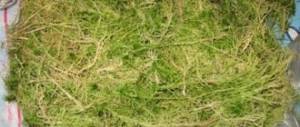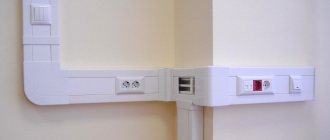Packaging properties of aluminum foil
Reliable barrier
The main property of aluminum foil is that it serves as a reliable barrier. Even the thinnest aluminum foil, just 6 micrometers thick - thinner than a human hair - provides reliable protection against light, oxygen, humidity, bacteria and unwanted odors. Therefore, products and medicines in aluminum packaging significantly increase their shelf life. Scientific research has shown that aluminum foil with a thickness of 6 micrometers (0.006 mm) can be considered an absolute barrier.
Quickly gains and releases heat
Aluminum foil conducts heat very quickly. This is a very important advantage, for example, when sterilizing milk, which then remains fresh for a long time even without a refrigerator. Rapid heat dissipation also reduces the process of cooling food for later storage.
Ideally plastic material
Aluminum foil is extremely lightweight and can easily be molded into different shapes and folded without any springback. This makes it an ideal packaging material for products such as oil.
Bright and attractive
Aluminum foil can be produced in different finishes - sparkling and matte. It can be painted with paints and varnishes, giving its silver surface a different texture - corrugated, ribbed or completely smooth. This foil is suitable for all printing methods and processes and therefore easily makes packaged products bright and attractive.
Boil, fry and bake
With aluminum foil you can cook, fry and bake both in the microwave and in a conventional oven.
Product packed in foil /1/
Using foil in a bath
Using foil in a bath
To choose the optimal method of thermal insulation, it is necessary to take into account several factors, the main of which are the operating conditions of the bathhouse and the material from which it is built. For warm log buildings with high-quality caulked walls, foil insulation is not needed, it will only be a waste of money.
Do not use foil in a bathhouse made of timber or logs
If the bathhouse is wooden, but large enough and does not warm up well, it is enough to sheathe the walls and ceiling with ordinary thin foil, and then cover it with clapboard. You can cover only the surface behind the stove with foil, this will speed up the heating of the steam room and save some fuel.
The walls behind the stove are covered with foil
A bathhouse made of aerated concrete is also considered quite warm, but such material requires high-quality vapor barrier. The choice of foil in this case is completely justified, and for convenience you can use laminated rather than ordinary foil.
Fastening laminated foil
Brick and frame baths must be insulated. Here, foil insulation based on cotton wool or expanded polystyrene is optimal. For the ceiling, the type of foil is also selected taking into account the thickness of the ceilings and the presence (absence) of thermal insulation in the attic.
Foil on the ceiling in the bathhouse
Operating conditions also have a certain meaning. If the sauna is used periodically and people steam in it for a short time, there is no great need for thermal insulation with foil. It’s a completely different matter if the steam room is heated very often or the bath procedures drag on for several hours: thermal insulation of the room will save a lot of firewood, the bath will warm up faster and take longer to cool down.
Food grade aluminum foil according to GOST 745
1 Classification of food grade aluminum foil
1.1 Based on manufacturing accuracy, foil is divided into the following types: N - normal accuracy; P - increased accuracy; B - high accuracy. 1.2 Based on the condition of the material, foil is divided into the following types: M - soft; T - hard. 1.3 Based on the condition of the treated surface, foil is divided into the following types: FG - smooth; FL - varnished on one side; FLL - varnished on both sides; FTL - varnished with thermovarnishes; FO - painted with colored varnishes or paints; FP - printed; FPL - printed on the front side and varnished on the back side; FPTL - printed on the front side and varnished with thermovarnishes on the back side; FLTL - with primer for printing on the front side and thermal varnishes on the back side. If the foil is embossed, then the designation “ts” is added to the above designations.
2 Assortment of food grade aluminum foil
2.1 The thickness of the foil and the maximum deviations in thickness correspond to those indicated in Table 1.
Table 1 - Foil thickness and maximum thickness deviations
2.2 Foil width - from 15 to 1500 mm. 2.3 Winding foil - onto metal bushings (spools) with an internal diameter of 34-36, 50-52, 68-70, 75-77 and 150-153. 2.4 The outer diameter of foil rolls is from 100 to 800 mm. 2.5 Example of foil symbol:
Smooth foil 0.050 mm thick, 100 mm wide, normal manufacturing accuracy, made of A5 aluminum, soft:
Foil FG 0.050 x 100 N A5 M GOST 145-2003
3 Chemical composition of food grade aluminum foil
3.1 Foil is made: 1) from aluminum grades AD, AD0 and AD1 according to GOST 4784-97; 2) made of aluminum grades A6, A5 and A0 according to GOST 11069; 3) from aluminum alloys АЖ0.6; AZh0.8 and AZh1 with the chemical composition indicated in Table 2; 4) from aluminum alloys 8011, 8011A, 1145 and 1050 with the chemical composition indicated in Table 3.
Table 2 - Chemical composition of aluminum and aluminum alloys for the manufacture of foil
Table 3 - Chemical composition of aluminum and aluminum alloys for the manufacture of foil (according to foreign standards)
1. Aluminum Foil – Multitalanted Lightweight Packing /GDA, Germany, 2014
Galvanized bandage tape 0.5 x 20; 0.7 x 20
It is a steel strip made of galvanized steel 0.5 mm thick, 20 mm wide, in rolls of 70 linear meters and 0.7 mm thick, 20 mm wide, in rolls of 50 meters. Very high tensile strength.
It is used for fastening pipe shells, galvanized steel casings on pipelines, in the construction of power lines, fiber optic and other communication lines, installation of road and other signs, packaging of products and other sectors of the national economy where reliable fastening is required.
The bandage tape made of galvanized steel is secured with special clamps using tension pliers. Pack of 100 pieces.
“Build up” batteries
Situations often occur when one of the batteries or two at once from some electronic device is completely discharged. In such emergency situations, foil will be a temporary solution to the problem. You need to insert a piece of foil to an AAA battery, thereby “increasing” it to a finger-type battery. Pieces of foil may also be needed if the springs on the remote control, for example, are loose and because of this it does not work well.
Aluminum bandage tape 0.25 x 33
It is an aluminum tape 0.25 mm thick, 33 mm wide, roll length 90-100 meters, cut to customer size. It is used for fastening corrugated foil in hot and cold water supply and heating networks, as well as for fastening smooth foil, fiberglass, and fiberglass to thermal insulation.
The aluminum bandage tape is secured with a buckle lock to tie and secure the tape.
To fix the aluminum banding tape, no special tool is required; everything is done manually and does not require special skills.
Smooth out wrinkles on clothes
In addition to removing static cling, you can remove wrinkles from your clothing by using aluminum foil. If you iron a sheet of foil under the lid of your ironing board before ironing, the foil will reflect the heat of the iron and remove wrinkles more effectively. Another way to use aluminum foil while ironing is to place it under the hole when patching anything to prevent the patch from sticking to the ironing board.
Smooth out wrinkles
Ease of use
First of all, the foil must be strong and not tear when unwinding. After opening the package, we carried out the first test - we unwound a piece of foil and tore it off by hand. Only one foil - the nameless one ("Food Foil") - broke inside when unwinding. There was a desire to immediately remove it from testing, but after carefully unwinding a large piece, we managed to curb it.
Later, problems arose again with this particular roll: the edge did not want to unfold - a situation familiar to many housewives.
We found the Sayanskaya grill foil the most convenient to use. We rated ease of use on a 5-point scale (see the summary table at the end of the test drive). We also made sure that it is more convenient to tear off the foil with your hand on the edge of the table, rather than cutting it with scissors.
Sharpening scissors
Dull scissors are a big problem for many people. There are very few effective ways to sharpen them at home and not all of them work. But using foil to sharpen scissors has proven to be practical. To do this, a sheet of food foil is folded several times, and then it is cut with scissors like a regular sheet of paper.
Aluminum foil can be useful not only in the kitchen for cooking or storing food, but also in everyday life. Therefore, you should always keep a couple of rolls of this universal item in your locker.
Foil hats
Of course, we could not ignore the scientific way of using the subject of this article. A beautiful and comfortable headdress made of aluminum foil will reliably protect your brain from harmful radiation and all negative influences. Moreover, this is the only way to protect your precious thoughts from being read from outside.
Do you think this is all we can do? No, bottles, corks, clothespins and many other useful items await us ahead!
Four types of thermal insulation foil and their areas of application
The types of insulators depend on the material on which the foil is applied, i.e. from their base. The thinnest (thickness is 2-10 mm) is foil polyethylene foam (foamed polyethylene). It is produced in a width of 100 cm. The roll is usually 50 m long. The scope of application is the widest - insulation of walls, roofs, refrigeration equipment, air ducts. It is also an excellent vapor and moisture insulator and an excellent sound absorber. Mounted on rails fixed to the surface.
Thicker polystyrene foam is available. Its maximum thickness reaches 30 mm. The main purpose of this material is to insulate water floors, since it has no moisture absorption. The shape is slabs that are easy to lay. The foam base is covered with a layer of foil.
Where it is necessary to insulate a heat source with a high temperature, and these are pipes, stoves, walls of baths and saunas, the most effective is thermal insulation with foil, which contains mineral wool or fiberglass as a base, one of the most durable insulating materials with low flammability, service life up to 50 years.
Release form - rolls, cylinders (which is especially convenient for pipe insulation), plates, mats, etc. It has a stable structure that can withstand temperatures up to 6000C and above.
Another type of heat insulator is foil tape, which, in addition to aluminum foil, has a layer of glue. Indispensable where there is a need for thermal insulation of small surfaces.
Due to its flexibility, it is used for laying in corners, as well as on surfaces with bends and differences. Does not melt even at 35000C. Since the laying of other foil heat insulators is carried out not overlapping, but end-to-end, the foil tape serves as an additional element that allows you to make the joints completely airtight.
Restoring electrical contact
Experienced car enthusiasts who have driven Soviet-made cars for many years know a way to temporarily solve the problem of a blown fuse if they don’t have a new one at hand. Instead of a melted conductor, a piece of aluminum foil was used, placed on the body of a failed fuse. This method of using foil is still alive today, as there are still many Zhiguli, Volga, and Muscovites driving around the roads of our country.
The idea of using foil to restore electrical contact has been continued in modern conditions. Folded several times or rolled into a ball, food or any other aluminum foil allows you to fill the space and create reliable contact between the batteries in the flashlight if they do not meet the required length standards. With its help, it is easy to restore contact between the battery pole and the terminal in the remote control for the TV and any other household appliance.
Alternative to steel wool
If a metal sponge for cleaning kitchen utensils has exhausted its allotted resource, there is no need to panic. A worthy replacement would be the use of aluminum foil. Rolled into a tight ball, it will do an excellent job of cleaning pans and pots. Such an improvised aluminum sponge, “fertilized” with detergent, will not leave any chance for food residues and other dirt on ceramic and glass objects.
The use of aluminum foil shows excellent results when cleaning silver cutlery. A piece of foil crumpled into a ball has mild abrasive properties, and therefore removes plaque and other contaminants well without the risk of scratching the surface of silver items.











